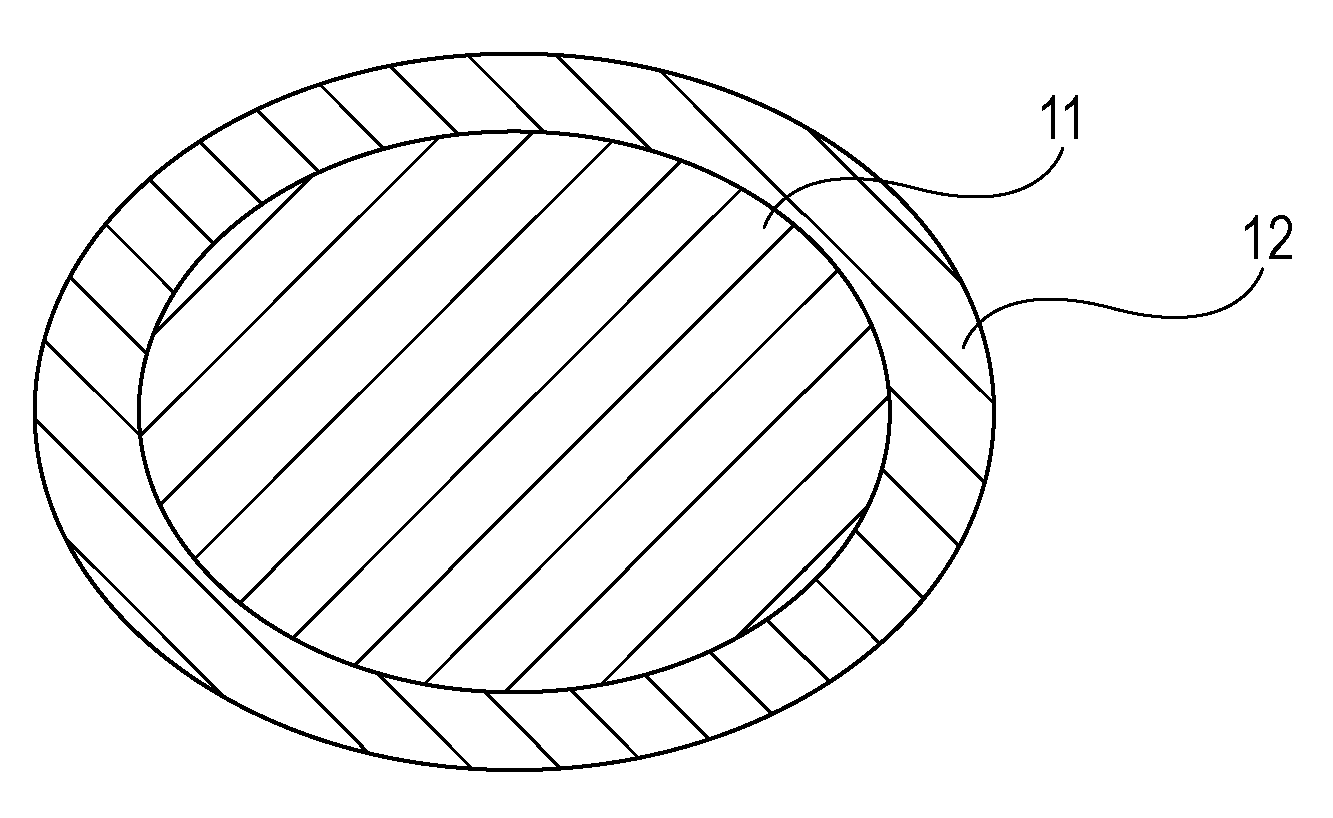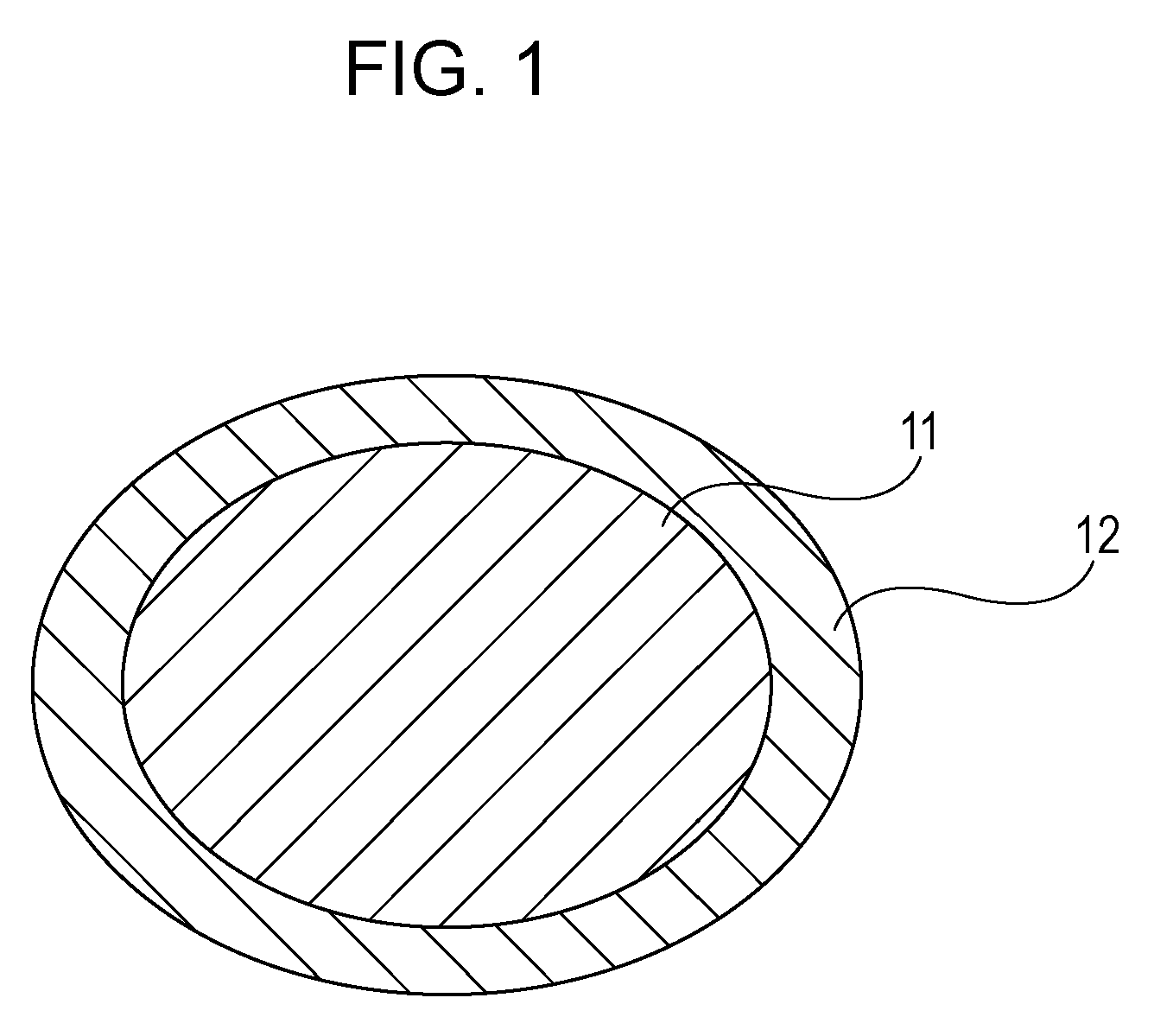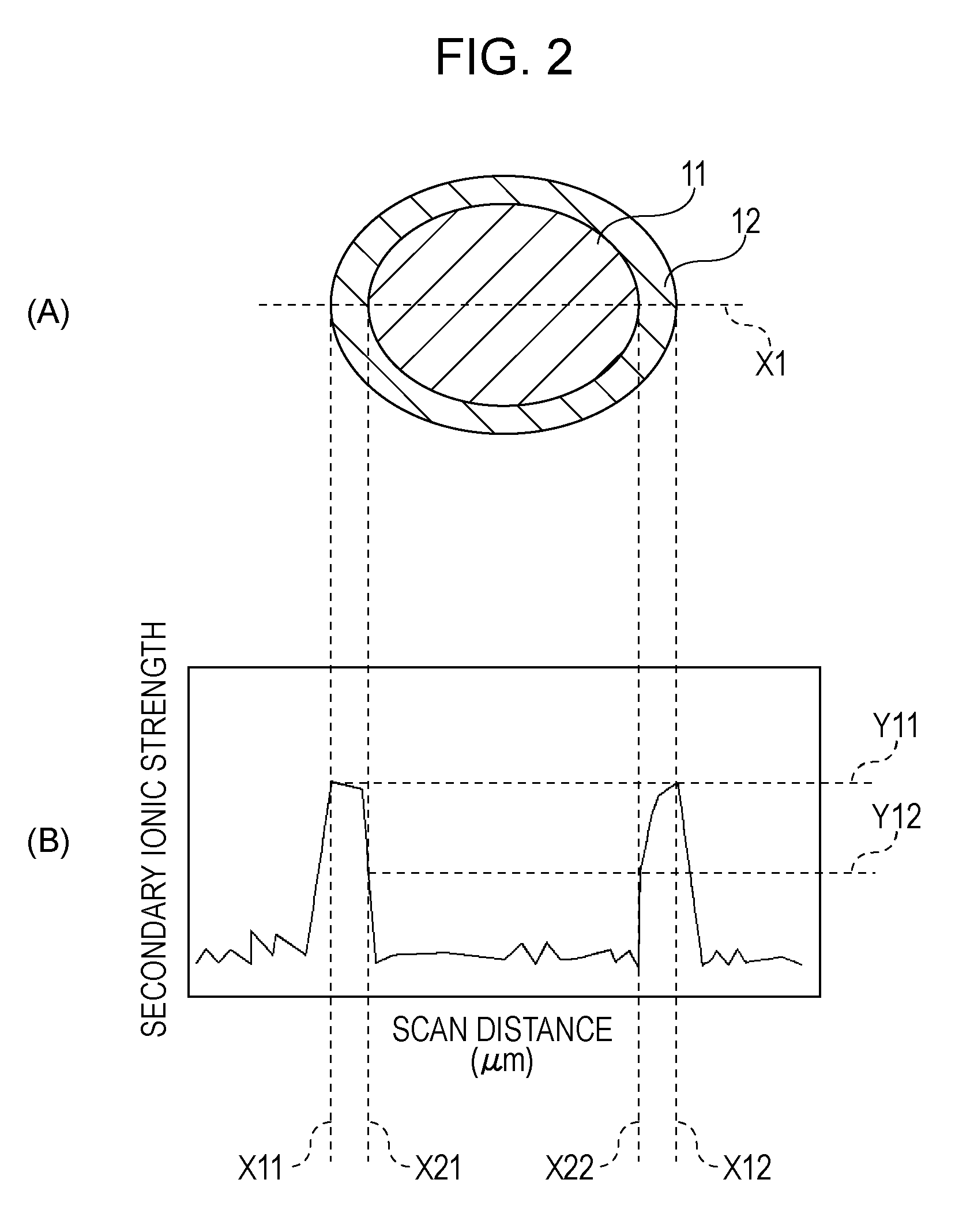[0040]The
acrylonitrile-
styrene-based resin content in the flame retardant polycarbonate resin composition is typically 0 to 15 percent by weight and preferably 5 to 15 percent by weight. When the
acrylonitrile-
styrene-based resin content is 15 percent by weight or less, advantageous effects can be achieved without degrading the flame retardancy or dynamic properties (
impact strength etc.) of the flame retardant polycarbonate resin composition.
[0042]The
impact strength improver is used to improve the impact strength of the flame retardant polycarbonate resin composition. Materials used for resin modification (rubberlike elastic materials,
thermoplastic elastomers, compatibilizers, and the like) are usually used as the impact strength improver.
[0043]Examples of the impact strength improver include rubberlike elastic materials such as acrylonitrile-butadiene-styrene (ABS), high-impact
polystyrene (HIPS), styrene-butadiene rubber (SBR),
methyl methacrylate-styrene resin,
methyl methacrylate-butadiene-styrene (MBS) resin,
isoprene-styrene rubber,
isoprene rubber,
polybutadiene (PB), butadiene-acryl rubber,
isoprene-acryl rubber, and
ethylene-propylene rubber; and
thermoplastic elastomers such as styrene-based elastomers (SBC),
vinyl chloride-based elastomers (TPVC), olefin-based elastomers (TPO), urethane-based elastomers (PU),
polyester-based elastomers (TPEE),
nitrile-based elastomers,
polyamide-based elastomers (TPAE),
fluorine-based elastomers,
polyethylene chloride-based elastomers (CPE), syndiotactic 1,2-
polybutadiene, trans-1,4-isoprene,
silicone-based elastomers,
ethylene chloride copolymer cross-linked alloys, and ester
halogen-based
polymer alloys. Other examples include styrene-
ethylene-butadiene styrene copolymers (SEBS: hydrogenated styrene-based
thermoplastic elastomer), styrene-ethylene-propylene-styrene copolymers (SEPS: hydrogenated styrene-based
thermoplastic elastomer), styrene-butadiene-styrene copolymers (SBS), styrene-hydrogenated butadiene-styrene copolymers, styrene-isoprene-styrene block copolymers (SIS), styrene-vinyl
oxazoline copolymers, a polycarbonate obtained by
grafting a styrene-based
elastomer such as epoxidized styrene-based
elastomer with an acrylonitrile-butadiene
polymer,
petroleum resin obtained by
polymerization of C5-C9 fractions, a material surface-modified with rubber
microparticle polymer, and a core-shell-type impact strength improver having a graft layer outside particle-shaped rubber in which the rubber component is one or combination of a butadiene-based rubber, an acryl-based rubber, and a
silicone-acryl composite rubber and the like.
[0044]Among these impact strength improvers, acrylonitrile-butadiene-styrene (ABS), high-impact polystyrene (HIPS), and styrene thermoplastic elastomers are preferred. Examples of the styrene thermoplastic elastomers include styrene-ethylene-butadiene-styrene copolymers (SEBS: hydrogenated styrene-based thermoplastic elastomers), styrene-ethylene-propylene-styrene copolymers (SEPS: hydrogenated styrene-based thermoplastic elastomers), styrene-butadiene-styrene copolymers (SBS), styrene-hydrogenated butadiene-styrene copolymers, styrene-isoprene-styrene block copolymers (SIS), styrene-vinyl
oxazoline copolymers, and epoxidized styrene elastomers. Of these, styrene-ethylene-butadiene-styrene copolymers (SEBS: hydrogenated styrene-based thermoplastic elastomers) are most preferable. The impact strength improvers described above may be used alone or in combination.
[0045]The impact strength improvers alone have an effect of improving the
toughness and elongation of the polycarbonate (PC) resins. In a mixed
system involving a polycarbonate (PC) resin and an acrylonitrile-styrene (AS) resin, the impact strength improvers are compatible with both resins or improve the compatibility by being reacted partly so as to improve the dynamic characteristics and
formability of the mixed resin.
 Login to View More
Login to View More 


